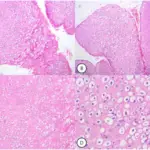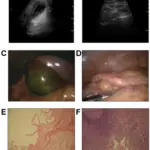Hemorrhoids are are swollen veins in your lower rectum also called piles, are swollen veins in your anus and lower rectum, similar to varicose veins. There are two types of hemorrhoids, internal or external hemorrhoids. Internal hemorrhoids lie inside the rectum. You usually can’t see or feel them and they rarely cause discomfort.
What is the Pathology of Internal Hemorrhoids?
The pathology of internal hemorrhoids is:
-Etiology: The cause of internal hemorrhoids is straining during bowel movements, sitting for long periods of time on the toilet, having chronic diarrhea or constipation.
-Genes involved: MMP9.
-Pathogenesis: The sequence of events that lead to internal hemorrhoids is not fully understood. Many functional, histopathological and anatomical findings have been accumulated during the last decades, but the relation between them remains obscure.
-Histology: The histology associated with internal hemorrhoids shows as piles, are swollen veins in the lower part of the anus and rectum. When the walls of these vessels are stretched, they become irritated.
How does Internal Hemorrhoids Present?
Patients with internal hemorrhoids typically are all genders in adults aged 45 to 65 years old. The symptoms, features, and clinical findings associated with internal hemorrhoids include: hard lumps near the anus that feel sore or tender, pain or ache in the anus, especially when you sit, rectal bleeding.
How is Internal Hemorrhoids Diagnosed?
Internal hemorrhoids is diagnosed by digital examination, and visual inspection.
How is Internal Hemorrhoids Treated?
Internal hemorrhoids is treated by surgical removal, or symptomatic management.
What is the Prognosis of Internal Hemorrhoids?
The prognosis of internal hemorrhoids is fair. This is not dangerous, but can result in pain and swelling. Internal hemorrhoids may bleed, but they usually aren’t painful.
What is the Pathology of External Hemorrhoids?
The pathology of external hemorrhoids is:
-Etiology: The cause of external hemorrhoids is straining while pooping, repeated straining while having a bowel movement, sitting on the toilet for a long time, weakened support tissues, Pregnancy.
-Genes involved: MMP9.
-Pathogenesis: The sequence of events that lead to external hemorrhoids shows that the veins become distended as they lose their support. The descended loose lining becomes more sensitive to pressure from straining and to trauma from the stool.
-Histology: The histology associated with external hemorrhoids shows tufts of engorged, dilated veins and arteries with thrombi and hemorrhage, in a dense stroma, covered by anal or rectal mucosa, which often is ulcerated.
How does External Hemorrhoids Present?
Patients with external hemorrhoids typically are all genders at age range of 50years.The symptoms, features, and clinical findings associated with external hemorrhoids include: pain or discomfort, swelling around your anus, bleeding.
How is External Hemorrhoids Diagnosed?
External hemorrhoids is diagnosed by anoscopy, and digital rectal exam.
How is External Hemorrhoids Treated?
External hemorrhoids is treated by symptomatic management and surgery if needed.
What is the Prognosis of External Hemorrhoids?
The prognosis of external hemorrhoids is good. They often go away on their own within a few days or weeks as the body reabsorbs the blood clot within the protruding blood vessel.



